Daddojanam Recipe (Temple Style)
Updated: August 6, 2022, By Swasthi
Daddojanam, Thayir Sadam, Bagala Bath are the other South Indian names to this traditional tempered curd rice. I have already shared a simple curd rice recipe, the way it is made in most homes for their everyday meal. Today I am sharing how to make curd rice in temple style for Naivedhyam . This is most commonly made during Dasara Navaratri as an offering to Godess Durga.
Different temples have their own way of preparing Naivedhyam foods and are specific to particular region and state. The method shared here is usually followed in very big temples where a large number of devotees come over through out the day and the prasadam is offered till late noon. The preparation of curd rice begins very early in the morning and the rice keeps good without turning sour till evening.
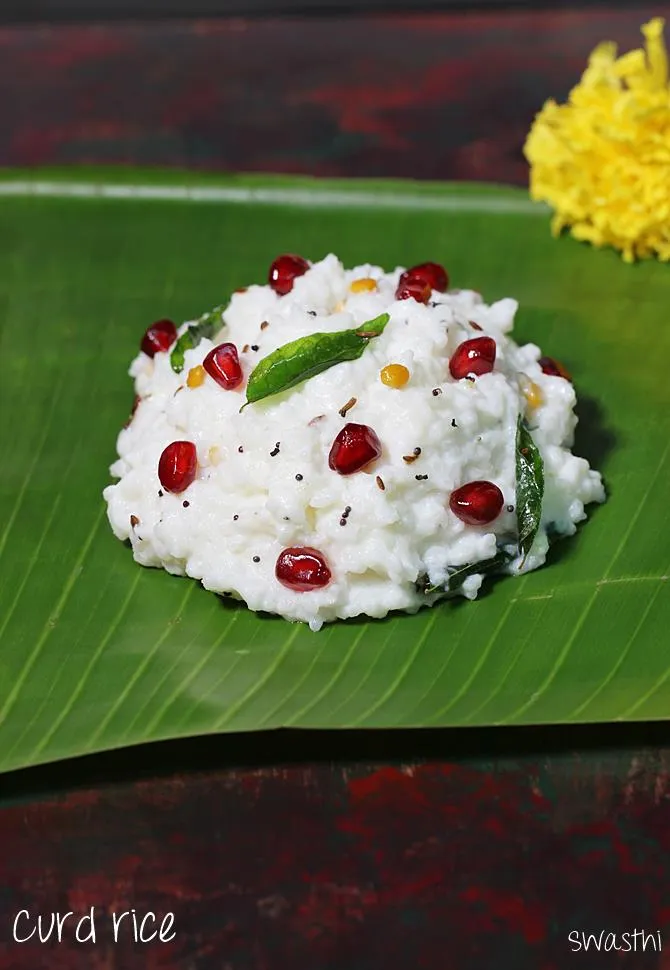
It is the method of preparation that keeps the daddojanam fresh for long hours. Ingredients like green chili, red chili and ginger are not used in this Naivedhyam food. Instead pepper is used. However we can find red chilies being used in many temples.
This method is very much suitable to make curd rice for lunch box and even while travelling since the rice doesn’t turn sour for long hours.
For more simple South Indian rice recipes you can check
Ven pongal
Temple style sweet pongal
Tomato rice
Coconut rice
Ghee rice
Photo Guide
How to Make temple Daddojanam
1. These are the ingredients to use. If you are not making this for offering to God, then you can also use slit green chilies and half tsp of grated ginger.
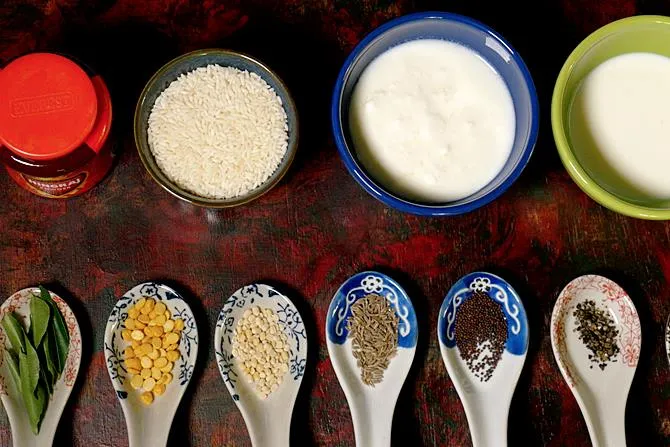
2. Wash rice a few times and soak it for about 20 minutes. You can skip soaking and cook the rice for longer. Pressure cook it until soft and mushy. I pressure cook for 2 whistles on a medium heat.
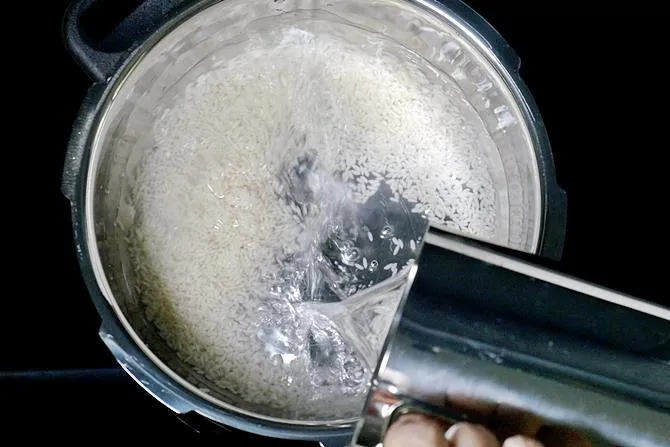
3. Once done, open the lid and mash the hot rice very well.
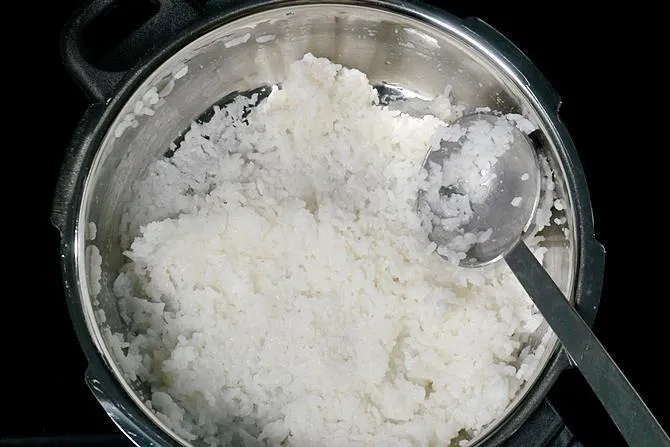
4. When the rice is still very hot, add boiled milk. Using boiled milk instead of unboiled will keep the rice good for longer. The milk can be very hot to warm.
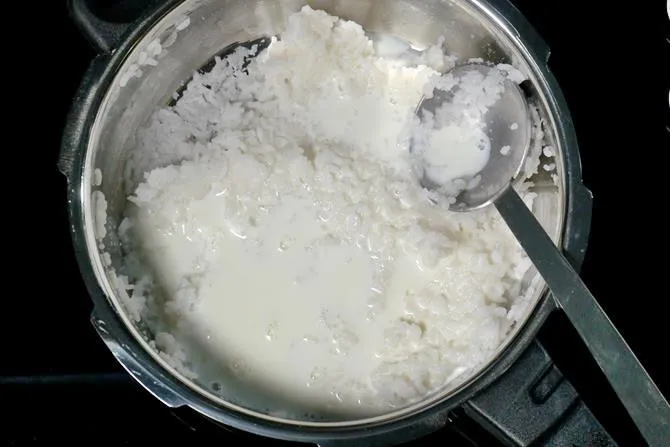
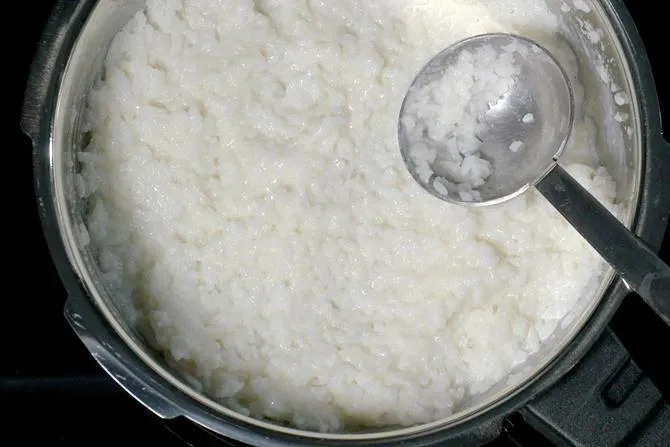
5. Mix up everything very well. The rice has to look very moist at this stage. If needed you can add in more milk. If the rice is aged, then it usually needs little more milk. Set this aside to cool completely.
6. When the rice is cooled, you will see the milk has been absorbed completely and it looks dry. Add salt at this stage.
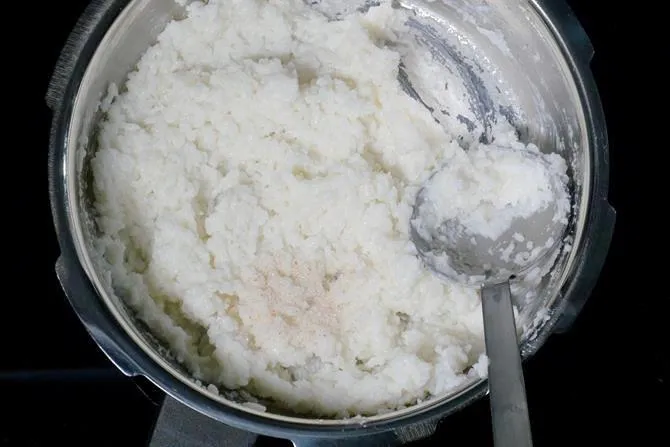
7. Then the curd.
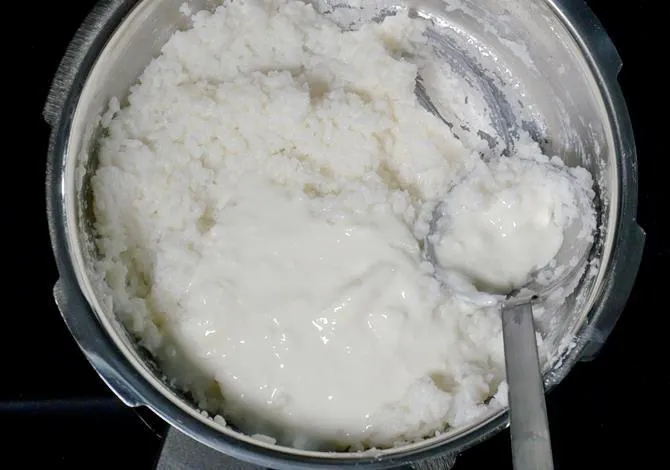
8. Mix up everything well. Rice must not be dry, it has to be gooey and creamy. Add in more curd if needed.
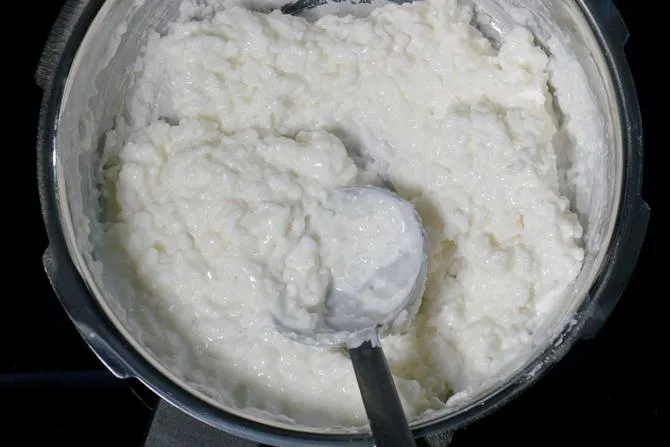
9. Heat oil in a kadai. Add mustard and cumin.
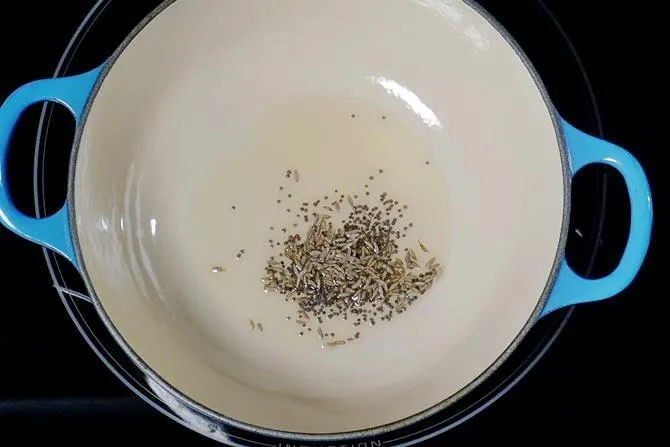
10. When they begin to splutter, add chana dal and urad dal. Fry until the dals turn golden.

11. Add curry leaves, pepper and hing. Switch off the stove.
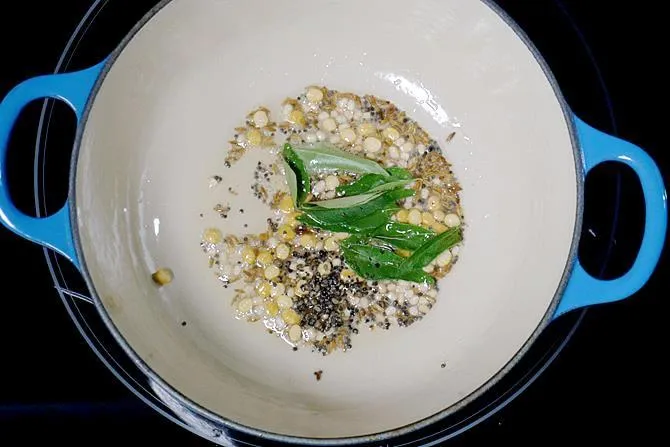
12. Cool down & Pour this over the curd rice. Mix very well.
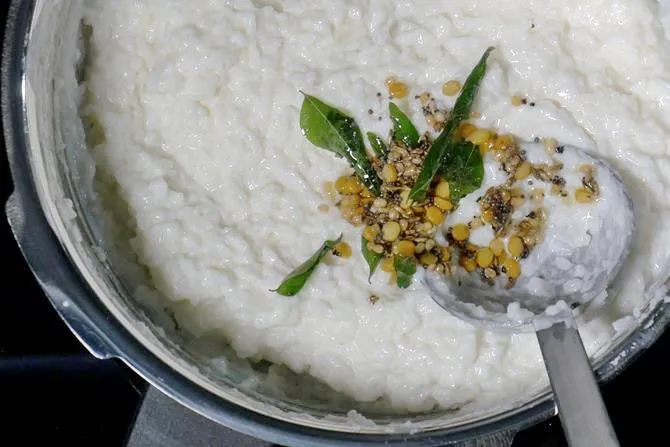
Temple style daddojanam is ready. After offering to the Goddess, I garnished with some pomegranate seeds. You can also use grated carrots and cucumber.
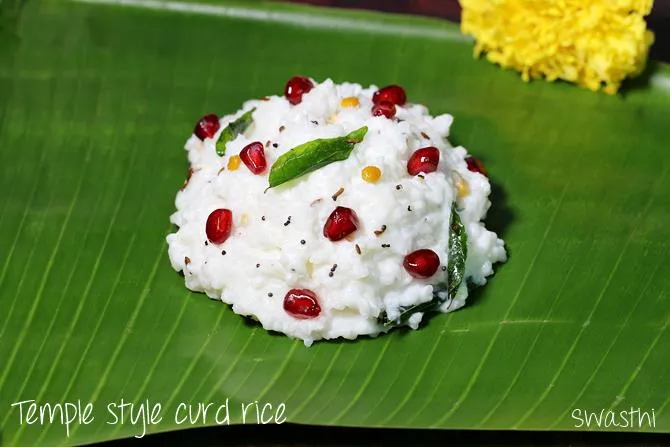
Related Recipes
Recipe Card
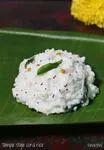
Daddojanam
For best results follow the step-by-step photos above the recipe card
Ingredients (US cup = 240ml )
- ½ cup rice
- 1 ½ cups water
- 1 ½ cups curd (yogurt)
- ½ cup full fat milk pre boiled
Seasoning
- 1 ½ tsp oil
- ½ tsp mustard seeds
- ½ tsp cumin / jeera
- 1 Pinch hing
- 1 sprig curry leaves
- ¾ tbsp chana dal
- ½ tbsp urad dal
- ½ tsp pepper coarsely crushed
Instructions
Preparation
- Wash half cup rice and soak for 20 mins. Soft cook it with 1.5 cups water in a pressure cooker for 2 whistle on a medium flame. You can also cook in a pot adding more water as needed.
- When the pressure goes down, open the lid and mash the rice soft while it is still very hot.
- Add boiled milk to the hot rice and mix up very well.
- Set aside to cool.
How to make daddojanam
- When the rice cools completely, Add curd and salt. Mix up well.
- Heat oil in a kadai.
- Add mustard and cumin. When they crackle, fry the dals until lightly golden.
- Add curry leaves, pepper and hing. Switch off the stove.
- Pour this over the curd rice.
- Mix well and offer as naivedhyam.This is good to serve after 2 to 3 hours.
- You can garnish daddojanam with pomegranate or grated carrots and cucumber.
NUTRITION INFO (estimation only)
© Swasthi’s Recipes
About Swasthi
I’m Swasthi Shreekanth, the recipe developer, food photographer & food writer behind Swasthi’s Recipes. My aim is to help you cook great Indian food with my time-tested recipes. After 2 decades of experience in practical Indian cooking I started this blog to help people cook better & more often at home. Whether you are a novice or an experienced cook I am sure Swasthi’s Recipes will assist you to enhance your cooking skills. More about me
Follow Swasthi’s Recipes

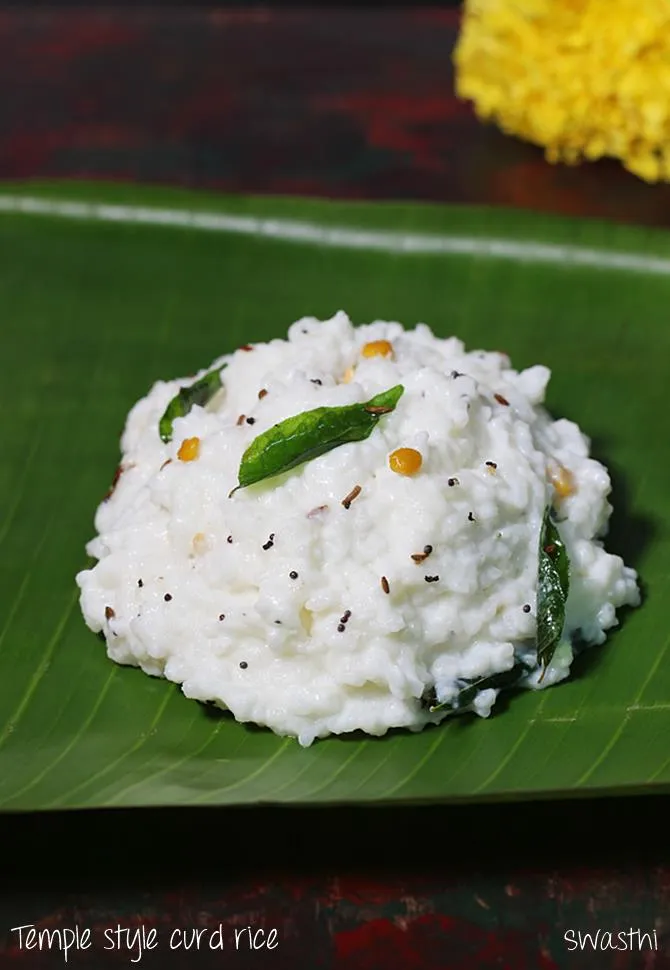
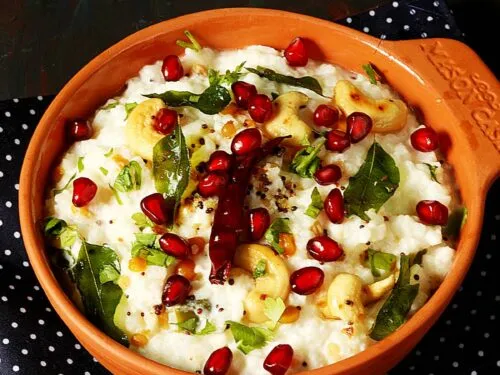
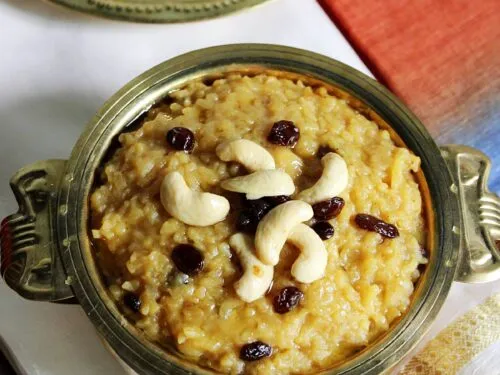
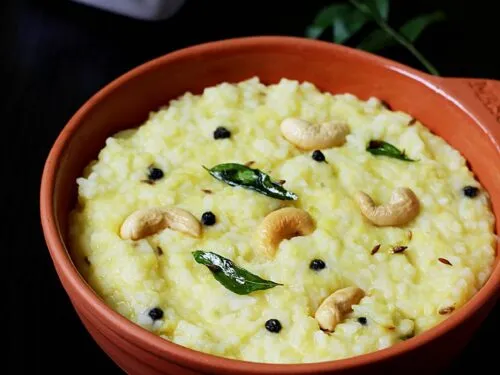
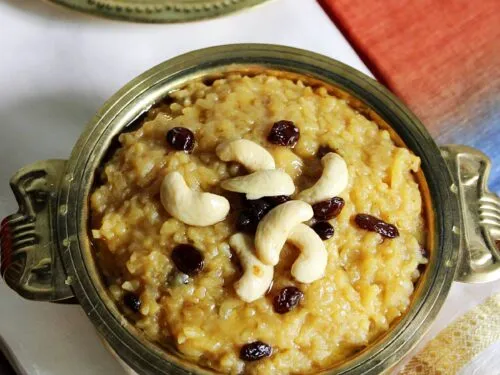
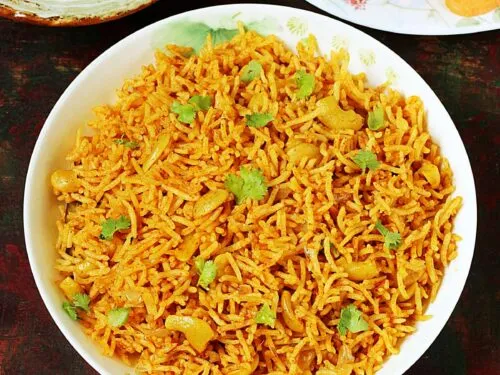
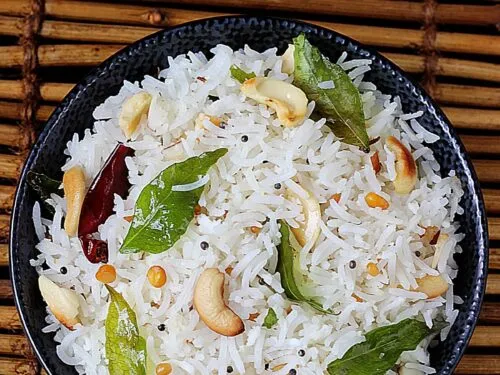
Comments
This was sooo yummy!
Except for milk, rest all is good. Milk & Salt should not be mixed as per ayurveda.
Hi Arpita,
milk or salt, one of them can be omitted. I make a regular home style curd rice to which I never add milk. I will update the recipe to put a note.
Which brand and variety (whole milk, low fat, or fat free) yogurt do you use? Please answer both questions.
I tried it and it came out amazing!! Thanks for sharing the recipe.
Welcome Anuhya
Glad to know
Very nice recipe but a small correction. It’s DHADIYOJANAM not DADDOJANAM
DHADI in sanskrit means Milk.
Thank you Bhanu
Thank you! The taste was exactly like what I remember of blore temple Prasadam! So glad for the recipe
Hi Gayatri
You are welcome! Glad you liked it. Thank you!
Excellent explanation abt receipes.thank u keep it up
Welcome Praveena,
Thank you!
You are the best
Thanks Shilpa